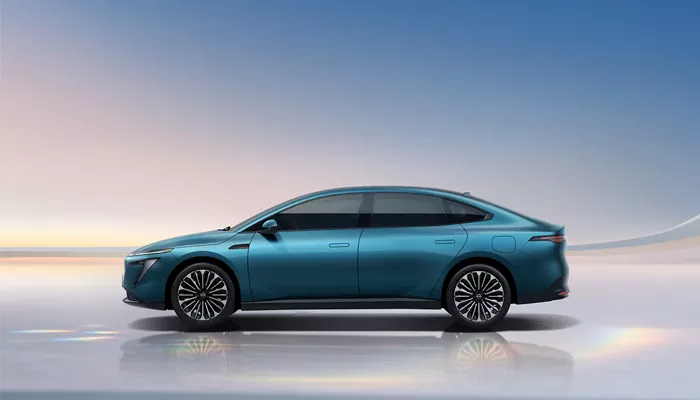Dongfeng Nissan, a joint venture of Nissan in China, has launched the N7 all-electric sedan at surprisingly affordable prices. This move marks one of the most significant comebacks by joint venture automakers in China in recent years.
The N7 was officially unveiled at an event last night, with prices ranging from RMB 119,900 ($16,450) to RMB 149,900. This price range is comparable to Xpeng’s (NYSE: XPEV) popular Mona M03, which is priced between RMB 119,800 and RMB 155,800. It’s also significantly lower than BYD’s (HKG: 1211, OTCMKTS: BYDDY) flagship Han L EV, which is priced between RMB 219,800 and RMB 279,800. For reference, the Mona M03 measures 4,780 mm, while the Han L EV is 5,050 mm long. The N7, however, is a 4,930 mm-long sedan.
The N7 is the first model to be designed and developed by Dongfeng Nissan’s Chinese team, and the company has emphasized that it is a globally oriented vehicle. Within just an hour and 40 minutes of the launch, Dongfeng Nissan announced via Weibo that orders for the N7 had reached 10,138 units.
Dongfeng Nissan also shared plans for future growth. The company intends to introduce at least five new models, including battery electric vehicles (BEVs) and plug-in hybrid electric vehicles (PHEVs), by the end of 2026.
The N7 is built on Dongfeng Nissan’s Tianyan architecture and focuses on providing comfort for families. It comes in five variants: 510 Air, 510 Pro, 625 Pro, 510 Max, and 625 Max, with prices starting at RMB 119,900 and going up to RMB 149,900.
The N7’s name follows a similar format to Xpeng’s models, with the numbers reflecting the car’s CLTC range. The sedan measures 4,930 mm in length, 1,895 mm in width, and 1,484 mm in height, with a wheelbase of 2,915 mm. The exterior design is tailored to appeal to mainstream Chinese consumers, a critical factor for success in the Chinese market. Its aerodynamic design results in a low wind resistance of Cd 0.208, enhancing energy efficiency.
Three of the N7 variants offer a 510 km range, powered by a 58 kWh lithium iron phosphate (LFP) battery, while the other two variants, offering a range of 625 km, feature a 73 kWh LFP battery. All five variants support 3C fast charging, allowing the battery to charge from 10% to 80% in just 19 minutes. The N7 also supports external discharge of up to 6.6 kW.
Unlike most current single-motor EVs, which are rear-wheel drive, the N7 features front-wheel drive. Its peak motor power is 160 kW, with a torque of 305 Nm, though acceleration details have not been provided.
The car comes equipped with a 15.6-inch center screen boasting 2.5K resolution, in line with other mainstream EVs. The cabin features a virtual voice assistant and integrates large AI models like DeepSeek-R1 for a more natural interaction experience.
Additionally, the N7 features an assisted driving system developed in collaboration with local Chinese startup Momenta. This system offers end-to-end assisted driving capabilities.
The launch of the N7 signals a significant rebound for Japanese car brands in China, as they face increasing competition from local electric vehicle manufacturers. Dongfeng Nissan’s aggressive pricing strategy, marketing efforts, and engagement with local influencers during the launch provide a strong foundation for the brand’s growth in the competitive EV market.
In recent years, local brands have gained substantial market share as China’s rapid shift to electric vehicles has left joint ventures behind. According to the China Passenger Car Association (CPCA), in March, China’s new energy vehicle (NEV) retail sales hit 991,000 units, with a penetration rate of 51.1%. Local brands accounted for 72% of NEV retail sales, luxury brands had a 35% share, and joint venture brands made up only 6%.

